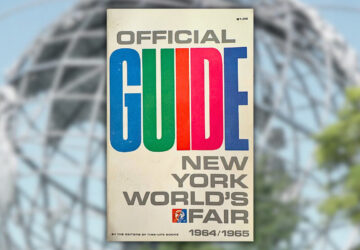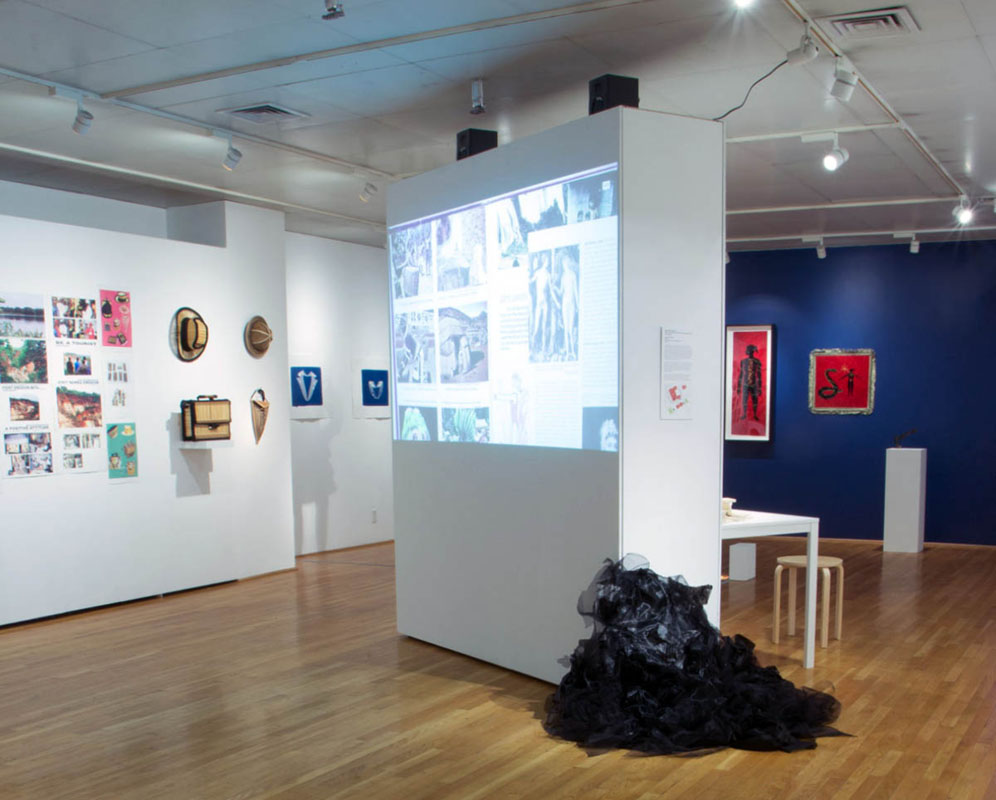 Image via No Longer Empty by Nicholas Fraser
Image via No Longer Empty by Nicholas Fraser
“It’s so refreshing to be able to drive a few minutes to the place where my work is exhibited,” said Shervonne Neckles, a Carribbean artist from Flatbush who currently resides in Queens, “Rather than have to take the train for an hour into Manhattan.” This is one of the main ideas behind the Southeast Queens Biennial: A Locus of Moving Points, which features Neckles and artists like Odathrowback, Elizabeth Velazquez, Janet Henry, Damali Abrams, Sana Musasama, and others. The exhibit is made up entirely of local Southeast Queens residents, many of whom grew up in Southeast Queens or have lived here for many years, and many of whom make art about Queens. The Southeast Queens Biennial: A Locus of Moving Points is curated by No Longer Empty and York College Fine Arts Gallery to highlight these local residents, especially to the rest of the local community; this is the joy of experiencing the exhibit as an outsider in Southeast Queens, watching this act of community building.
A locus is a fixed point, and in the psychogeography of New York City, Manhattan still holds the central position. This exhibit joins the efforts to move our focus to the dense and vibrant margins. It brings out the idea that to fully understand the rich cultural production and nourishment that comes out of Southeast Queens, the neighborhood is better described as a set of moving points—memories, histories, immigrant bodies—rather than a fixed point, as most places in New York are understood as. Fixed points in relation to the central locus of Manhattan. The works on display show, through the stories and experiences that they depict, how much movement is a part of Southeast Queens, and how important movement is to understand New York City.
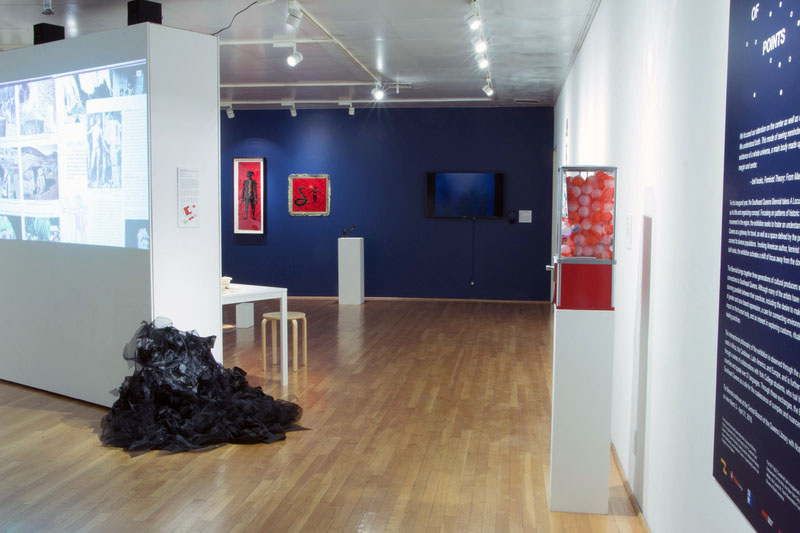 Image via No Longer Empty by Nicholas Fraser
Image via No Longer Empty by Nicholas Fraser
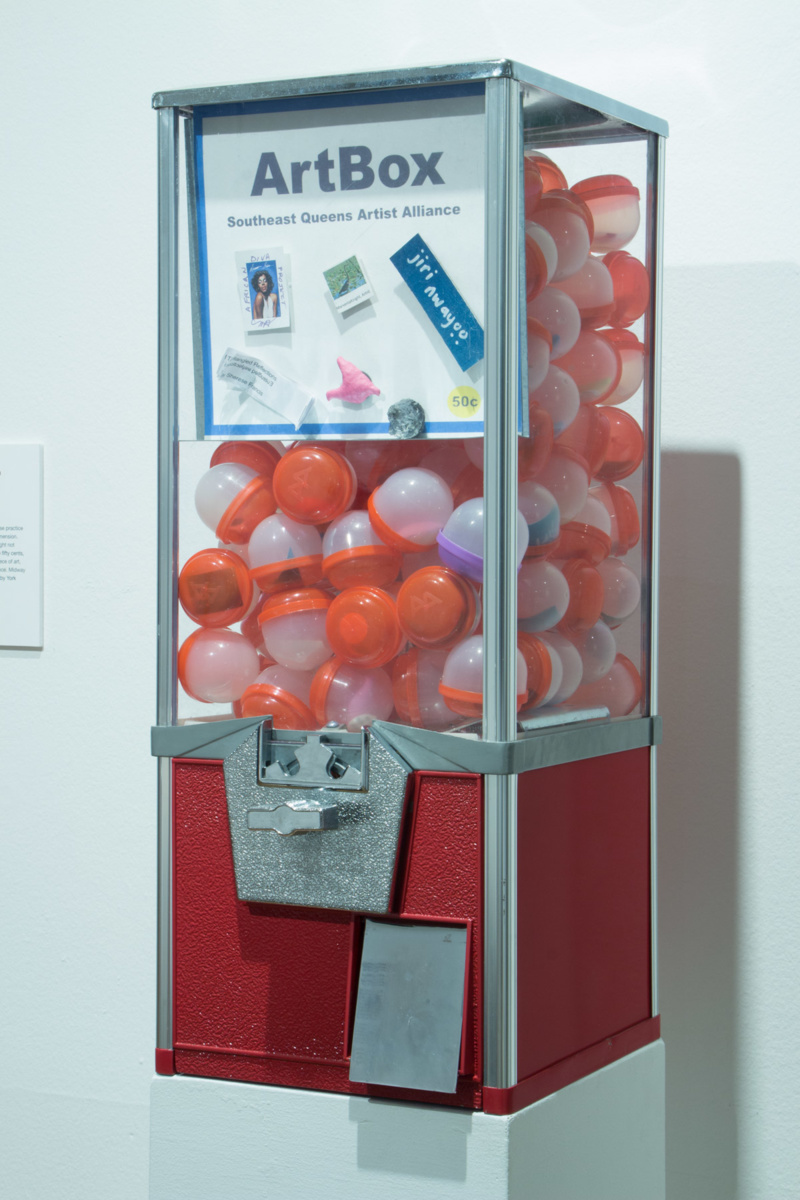 Image via No Longer Empty by Nicholas Fraser
Image via No Longer Empty by Nicholas Fraser
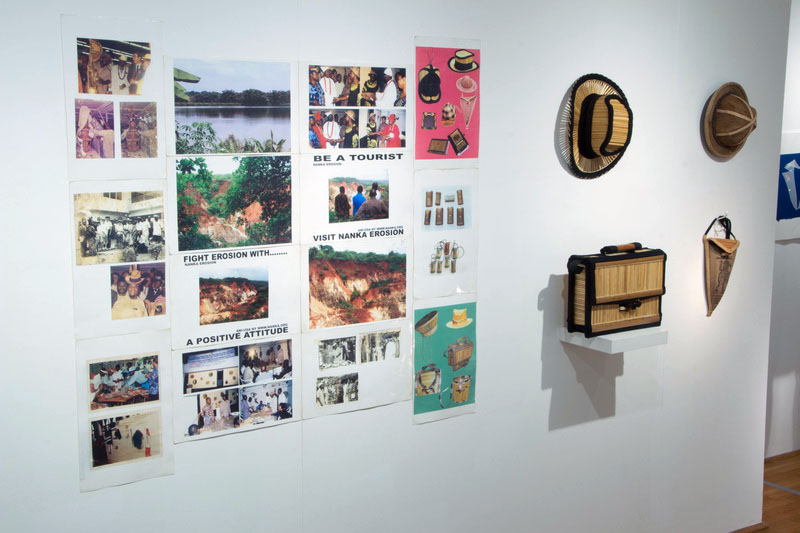 Image via No Longer Empty by Nicholas Fraser
Image via No Longer Empty by Nicholas Fraser
Many of the projects in the Biennial involve or depict some level of communal work, and show a relationship both with the local community as well as with the earth. Odathrowback, a carpenter and artist who helped build the gymnasium of York College, has created a portrait of Southeast Queens’ “DNA” using fabric donated by the community. The piece is an extension of an earlier project made from denim collected from members of his family, and it collects pieces to form a mosaic-like portrait of a unified being comprised of the individuals who make it. Okechukwu Okegrass Ofiaeli, who focuses on turning vegetation waste into art, brought a version of his project Waste to Wealth to the Biennial. The project uses collective art made from natural materials to offer alternatives to industrial processes, as a response to bush burning in Nigeria that has destroyed the soil; the artists teaches the community how to weave hats, bags, and other everyday items which are displayed here, out of elephant grass. Waste to Wealth came to Southeast Queens after Hurricane Sandy, to help the community make use of the uprooted sycamore trees.
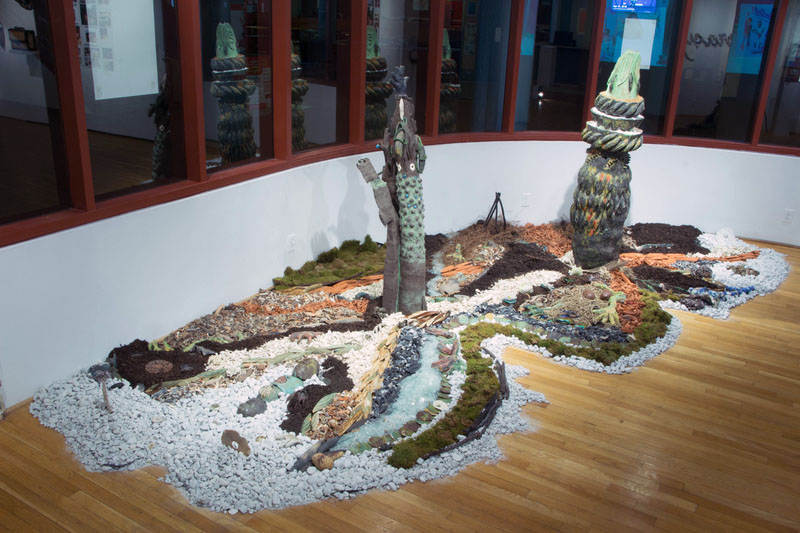 Image via No Longer Empty by Nicholas Fraser
Image via No Longer Empty by Nicholas Fraser
The exhibition also shows the firm and toxic relationship between capitalism and patriarchy, through artists like Shervonne Neckles and Sana Musasama. Neckles explores the female body in dialogue with the natural world of the Carribbean, using earthen materials in her art, and imagines a kind of rebirth of a matriarch. Musasama, too, uses the earth in her installation of the Maple Tree Movement, an initiative to stop consumption of West Indian sugar because of its connection to slave plantations. Musamama’s sculptures show both industrial and natural processes, and highlight the violence of industrial extraction of syrup, both on the bodies of slaves as well as on the maple trees, which the artist refers to as “silent witnesses” of centuries of this violence.
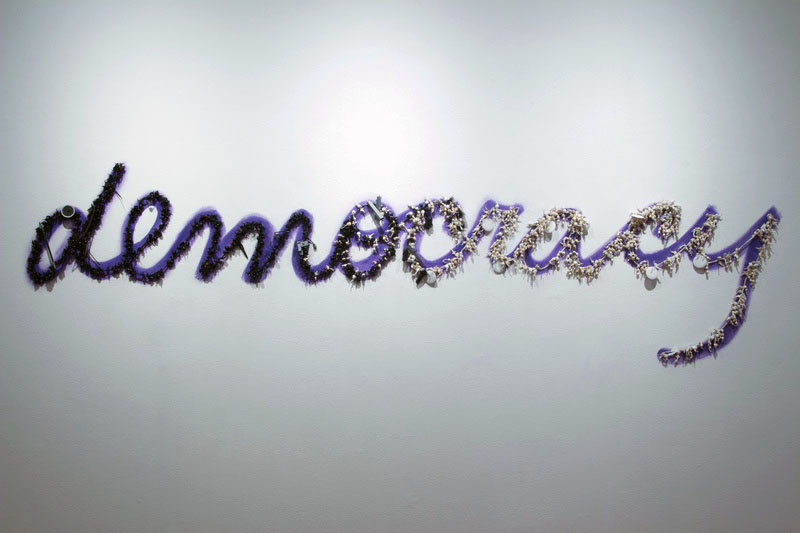 Image via No Longer Empty by Nicholas Fraser
Image via No Longer Empty by Nicholas Fraser
One of the most striking parts of the exhibit is the word democracy written across the wall in purple—a combination of blue and red. The paint is just visible under strings of beads and objects that attempt to include all the peoples and histories, from indigenous to immigrant communities, that need to be included for democracy to be successful. The artist, Janet Henry, a jewelry maker, also shows through the work how violent the project of democracy, especially when it is executed by the U.S., really is sometimes.
The exhibit also includes video installations, with two videos by artist Damali Abrams that explore the idea of women extracting themselves from the narratives that they are written into, as well as the way narratives are imposed on women, and the violence of this imposition. White upper-middle class society’s manufactured hysteria around the “problem” of the “unmarried black woman” shows the insistence on victimizing black women as well as criminalizing black culture in general, rather than addressing patriarchal violence. The artist uses video from popular media and from news reports in the nineties and early aughts, to show this hysteria and the problematic way it’s been talked about. Curator Niama Safia Sandy pointed out the extreme hypocrisy of white society that talks about the “attractiveness” of Black women as though it is a relevant factor to marriage and class by getting to the crux of the relationship between America and the Other. “African American women slaves were wet nurses for white infants. Their breast milk raised white Americans,” Sandy said. “Black women are responsible for the immune systems of white Americans.” In other words, the DNA of this country is built on the bones and the labor of everything America has othered all its life: other peoples, and by extension other places; its lifeblood resides in a series of moving points.
Southeast Queens Biennial: A Locus of Moving Points is on view at York College Fine Arts Gallery through April 21, 2018. For more information, visit york.cuny.edu.
Next, check out Mural of the Statue of Liberty Comes to the High Line and Women Immigrants of NYC Exhibit Debuts at Queens Museum.


